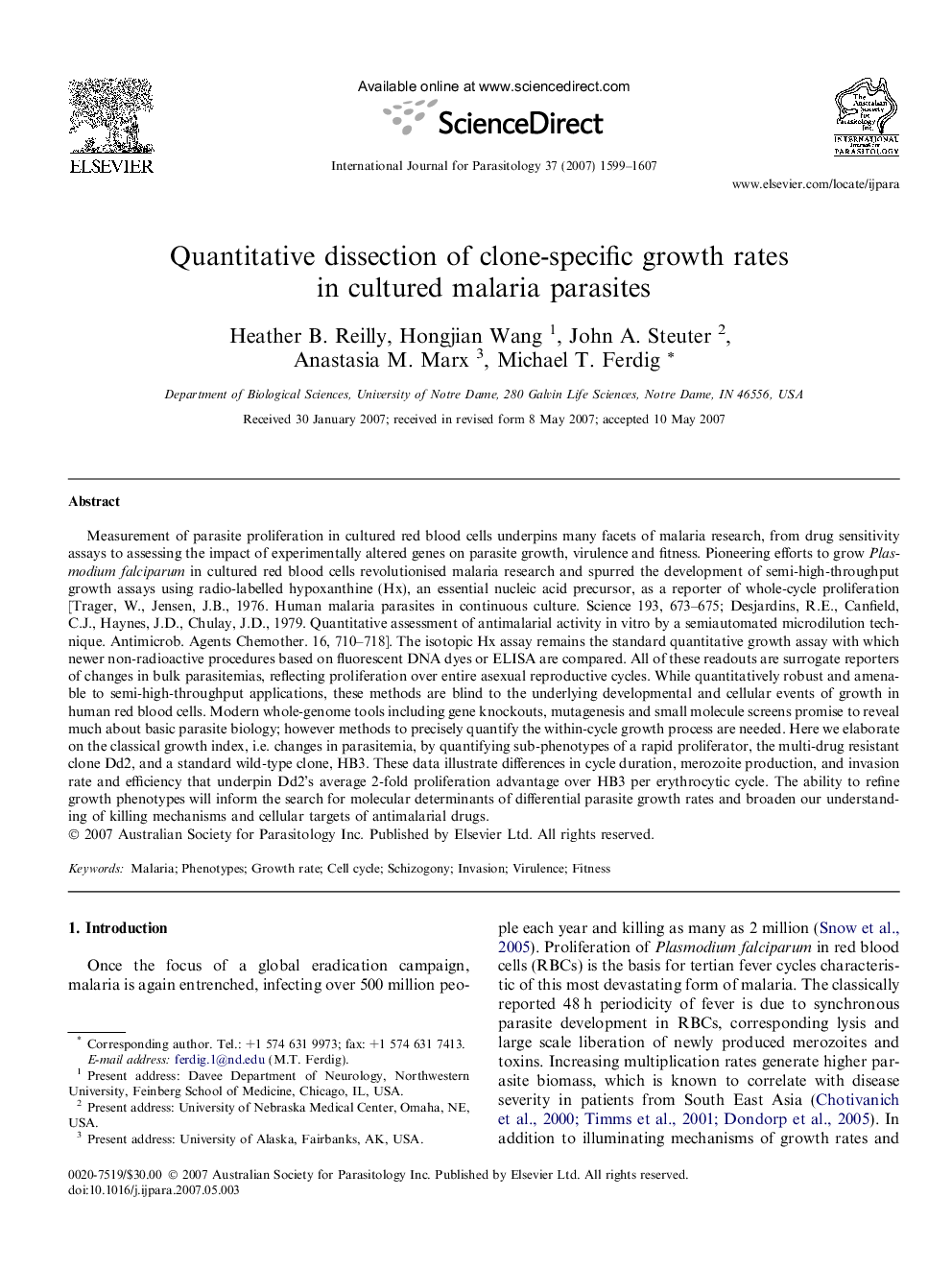| کد مقاله | کد نشریه | سال انتشار | مقاله انگلیسی | نسخه تمام متن |
|---|---|---|---|---|
| 2436647 | 1107336 | 2007 | 9 صفحه PDF | دانلود رایگان |

Measurement of parasite proliferation in cultured red blood cells underpins many facets of malaria research, from drug sensitivity assays to assessing the impact of experimentally altered genes on parasite growth, virulence and fitness. Pioneering efforts to grow Plasmodium falciparum in cultured red blood cells revolutionised malaria research and spurred the development of semi-high-throughput growth assays using radio-labelled hypoxanthine (Hx), an essential nucleic acid precursor, as a reporter of whole-cycle proliferation [Trager, W., Jensen, J.B., 1976. Human malaria parasites in continuous culture. Science 193, 673–675; Desjardins, R.E., Canfield, C.J., Haynes, J.D., Chulay, J.D., 1979. Quantitative assessment of antimalarial activity in vitro by a semiautomated microdilution technique. Antimicrob. Agents Chemother. 16, 710–718]. The isotopic Hx assay remains the standard quantitative growth assay with which newer non-radioactive procedures based on fluorescent DNA dyes or ELISA are compared. All of these readouts are surrogate reporters of changes in bulk parasitemias, reflecting proliferation over entire asexual reproductive cycles. While quantitatively robust and amenable to semi-high-throughput applications, these methods are blind to the underlying developmental and cellular events of growth in human red blood cells. Modern whole-genome tools including gene knockouts, mutagenesis and small molecule screens promise to reveal much about basic parasite biology; however methods to precisely quantify the within-cycle growth process are needed. Here we elaborate on the classical growth index, i.e. changes in parasitemia, by quantifying sub-phenotypes of a rapid proliferator, the multi-drug resistant clone Dd2, and a standard wild-type clone, HB3. These data illustrate differences in cycle duration, merozoite production, and invasion rate and efficiency that underpin Dd2’s average 2-fold proliferation advantage over HB3 per erythrocytic cycle. The ability to refine growth phenotypes will inform the search for molecular determinants of differential parasite growth rates and broaden our understanding of killing mechanisms and cellular targets of antimalarial drugs.
Journal: International Journal for Parasitology - Volume 37, Issue 14, December 2007, Pages 1599–1607